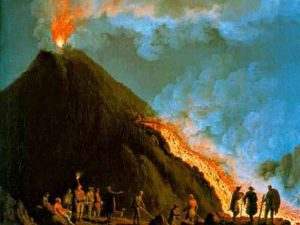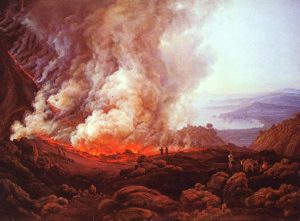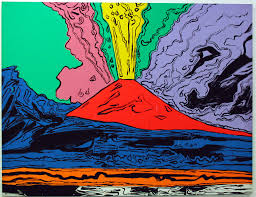Imposing, evocative and apparently peaceful and quiet. Vesuvius is one of the symbols of Naples and a source of inspiration for artists and painters from all over the world. Imagining the Gulf of Naples without Vesuvius is practically impossible, and its long history has given rise to numerous myths and legends over the millennia.
Between wizards and hermits
In a distant time a mighty magician watched over Naples. He reigned supreme over the entire Gulf, but a leg trapped in the rocks prevented him from moving elsewhere and extending its borders. One day a sudden movement of the earth freed the magician's leg. However, pulling out the limb, the one who watched over the city accidentally opened a chasm from which fire and lava began to come out. Thus Vesuvius was born.
This is one of the many stories that are told about his training. Perhaps not the most common, but certainly among the most original.
The legend narrated by Abbot Desiderio is also very unique. He writes of a Neapolitan friar who lived as a hermit along the slopes of the volcano. On a full moon night, the friar saw two shady figures dragging a bale of hay.

Intrigued, the religious approached the two men and asked the reason for this effort. In a faint tone of voice one of the two said that the hay was necessary to feed the flames of Vesuvius, so that it would eliminate all rich and evil men. That hay in particular was to kill the Prince of Capua Pandolfo and the Duke of Naples Giovanni. The friar then rushed to inform Duke Giovanni himself who, in turn, sent emissaries to Prince Pandolfo. These emissaries arrived with the already dead prince of Capua. About fifteen days later Duke Giovanni also died. This has led to the legend that every eruption corresponds to the death of a rich and wealthy person.
Love in the times of Vesuvius
Vesuvius has also inspired several legends related to love. An example is the story of Vesèvo and Sebeto. One day the two young people saw Leucopetra on the beach, a beautiful sea nymph, intent on collecting shells along the beach. For both of them it was love at first sight and the two friends started a close court against him during the long walks on the beach. However, she did not reciprocate this sentiment and one day, in exasperation, she asked her father Neptune for help. The god of the sea, moved to pity, thus transformed it into a beautiful white stone statue. From that moment the two young men fell into despair. Sebeto began to cry continuously until it became a river (now dried up). Vesèvo instead turned into a fire-breathing mountain: Vesuvius.
Another very popular legend tells of a nobleman from the Vesuvius family who fell in love with a girl from the Capri family.

Their bond surpassed everything, but not the rivalry between the two families. And one day, by surprise, the girl's parents forced her to separate from her beloved. To do so they forced her to embark for a secret location off the coast of Naples. However, the idea of getting away from Vesuvius was unbearable for her, so she decided to throw herself into the sea and drown. The young noble, as soon as he learned of the death of his beloved, began to shed tears of fire. Her pain, her hatred and those tears were so great that she turned into a volcano. At the exact point where the girl drowned, a beautiful blue island came out, known today as Capri. From that moment the two would never have embraced again and Vesuvius, desperate for this fate, according to the legend every time he turns his gaze on his Capri erupts fire and flames.





